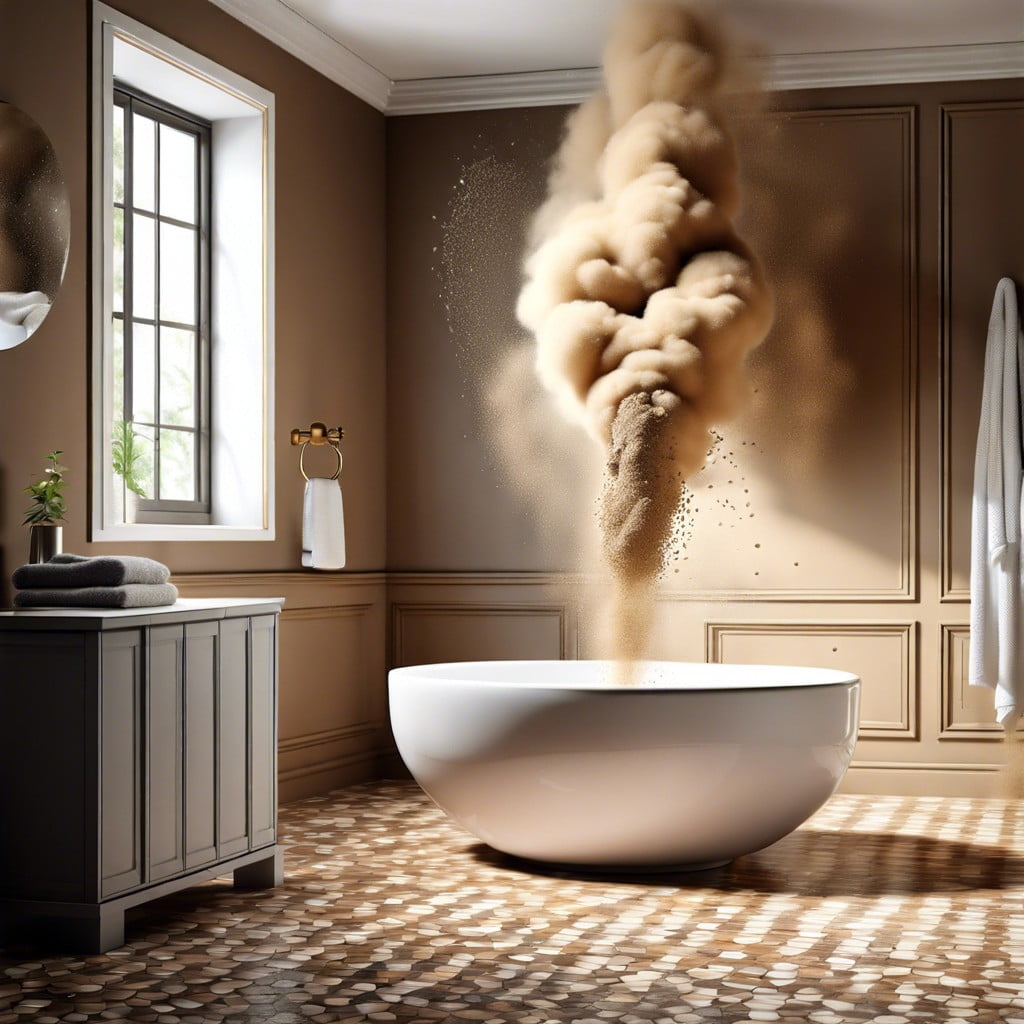Last updated on
Discover the multifaceted purpose of the bathroom fan, a crucial component often underestimated in its contribution to maintaining a healthy and comfortable home environment.
Key takeaways:
- Fan expels air to maintain fresh and comfortable bathroom environment.
- Ventilation eliminates steam, odors, and improves indoor air quality.
- Fan prevents mold and mildew by whisking away humidity.
- Proper use of the fan improves energy efficiency.
- Regular maintenance keeps the fan in top condition for optimal performance.
How Does a Bathroom Vent Fan Work?
Vent fans operate by drawing air from the bathroom and expelling it to the outside through a duct. This creates a negative pressure within the bathroom space, which then pulls fresh air from outside the room through gaps under the door or via passive vents.
When switched on, the fan blades spin, powered by a motor, and this mechanical action is what moves the air. This continuous circulation ensures that humidity and odors are vented out quickly before they settle on surfaces or infiltrate the rest of the home.
Additionally, high humidity levels that linger can damage paint and fixtures, which is why efficient functioning of the vent fan is essential in maintaining the structural integrity of the bathroom.
Ventilation: Eliminating Steam and Odor
The primary roles of a bathroom fan include whisking away excess humidity and neutralizing odors. After a hot shower or bath, steam rises and without proper ventilation, this moisture lingers, clinging to walls and mirrors. The fan effectively redirects this steam outside, maintaining a clear and comfortable bathroom environment.
In terms of odors, bathrooms are, understandably, frequent hosts to a variety of smells. A well-functioning fan acts much like an exhaust, drawing out unwanted scents and ensuring that the air within the bathroom remains fresh. It’s worth noting that consistent ventilation helps in sustaining not just a pleasant atmosphere but also contributes to the overall wellness of your home’s indoor air quality.
A bathroom without these practical measures becomes a breeding ground for mold and unpleasant aromas; therefore, the importance of a reliable fan cannot be overstated.
Moisture Control: Preventing Mold and Mildew
Mold and mildew are not just unsightly – they can also be hazardous to your health, triggering allergies, and respiratory issues. The warm, damp conditions of a bathroom after a hot shower create an ideal breeding ground for these unwanted guests.
A fan works tirelessly to whisk away humidity, keeping surfaces dry and making it tough for mold spores to settle and grow. Without proper air circulation, damp towels, and soggy bathmats add to the problem, turning your bathroom into a petri dish of sorts.
Regular use of your bathroom vent not only helps to preserve the integrity of your walls and ceilings by steering clear of moisture damage but also maintains a healthier environment. Thus, the unseen role of the humble bathroom fan is pivotal in the battle against mold and mildew.
Energy Efficiency: When to Use the Bathroom Fan
Running your bathroom fan seems like a small action, but it plays a crucial role in managing energy costs. Here’s why:
1. Timed Usage: Operate the fan during and 15-20 minutes after a shower to remove moisture effectively without overworking it.
2. Humidity Sensors: Some models come with sensors that automatically switch off, optimizing energy consumption.
3. Correct Sizing: Ensure your fan is the right size for your bathroom; an oversized fan can waste energy, while an undersized one works harder, increasing costs.
4. Insulation and Sealing: Proper insulation around the fan prevents heat loss during colder months, maintaining energy efficiency.
By minding these points, you strike a balance between healthy air quality and lower energy bills.
Maintenance: Keeping Your Fan in Top Condition
Regular cleaning shouldn’t be underestimated; a buildup of dust and lint can hamper your fan’s efficiency dramatically. Disconnect power to the unit before popping out the vent cover and wash it with soapy water, ensuring it’s thoroughly dry before replacement.
Semi-annual inspections can catch small problems before they escalate. Listen for unusual noises or vibrations, which might indicate a loose part or motor issues.
Replacing the filter as necessary is a must for those models equipped with them. A clogged filter not only reduces efficiency but also poses a potential fire hazard.
Lubrication, although not required for all models, can extend the life of those with accessible bearings. Consult your manufacturer’s guide to determine if and how this should be done.
Lastly, verify that the exterior vent flap is free of obstruction and opens properly. A vent that doesn’t close can invite unwanted pests or cold drafts into your home.
Regular maintenance benefits you twofold: by sustaining peak performance and by prolonging the lifespan of your bathroom fan, ensuring that it continues to protect your home from the detriments of excess moisture and odors with silent efficiency.
Recap




